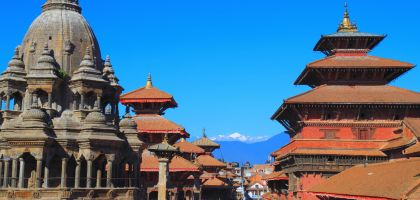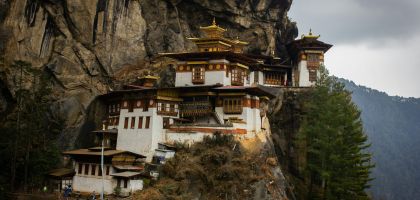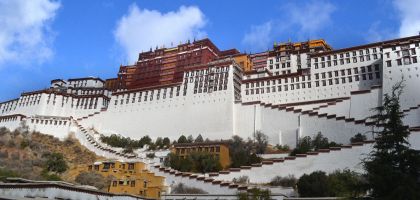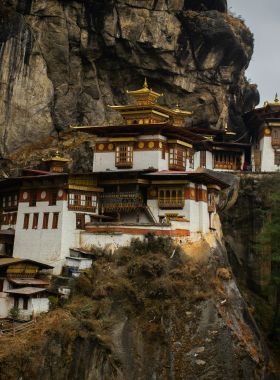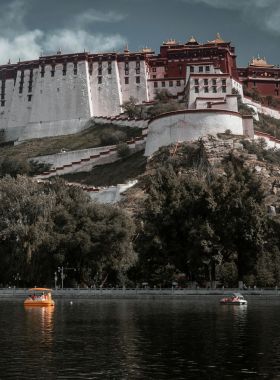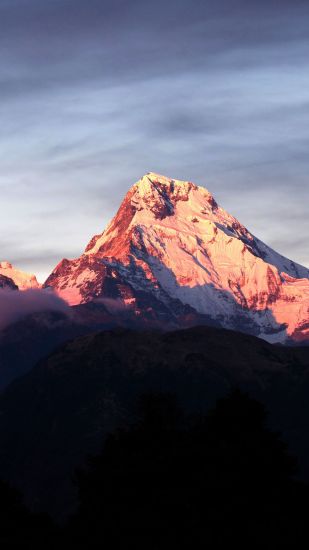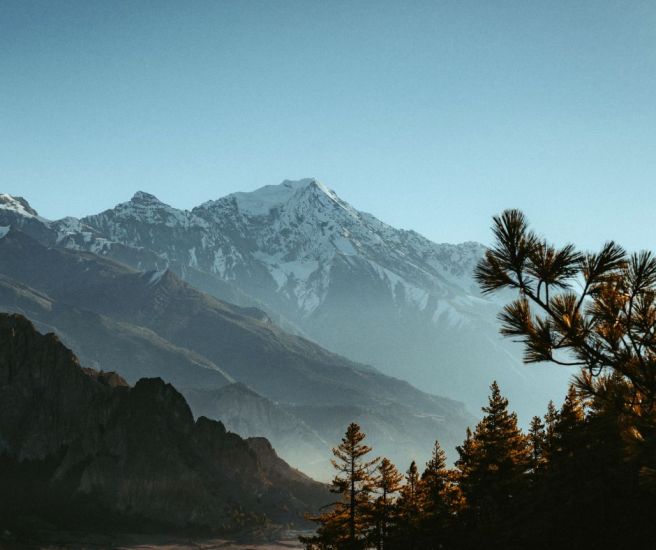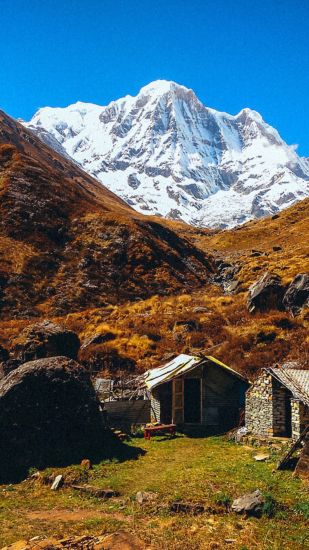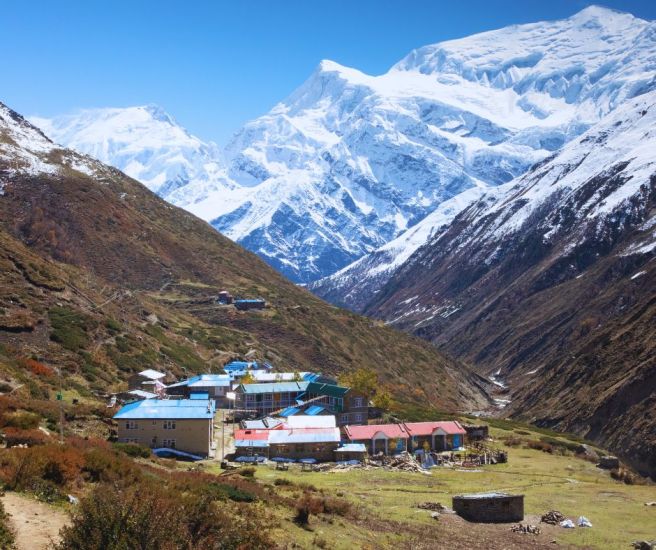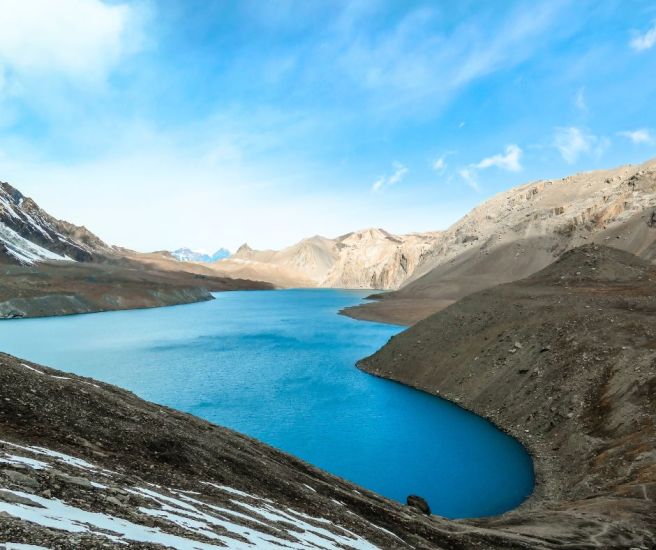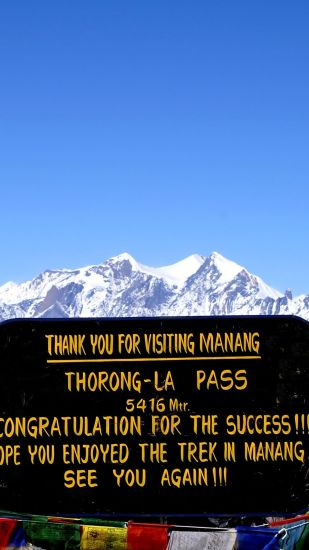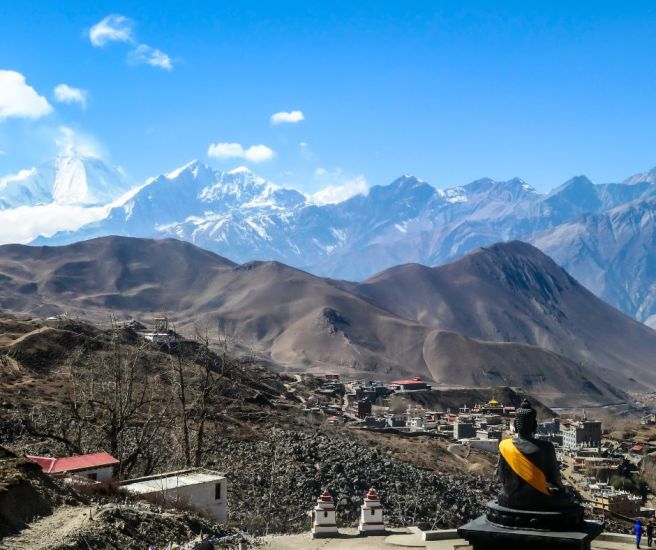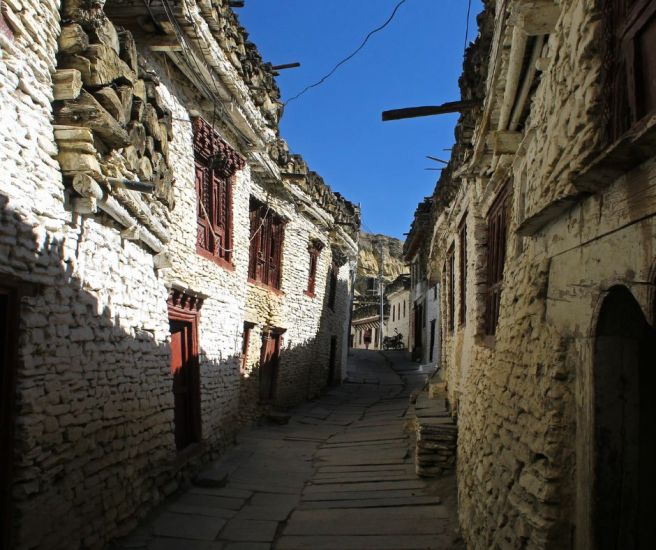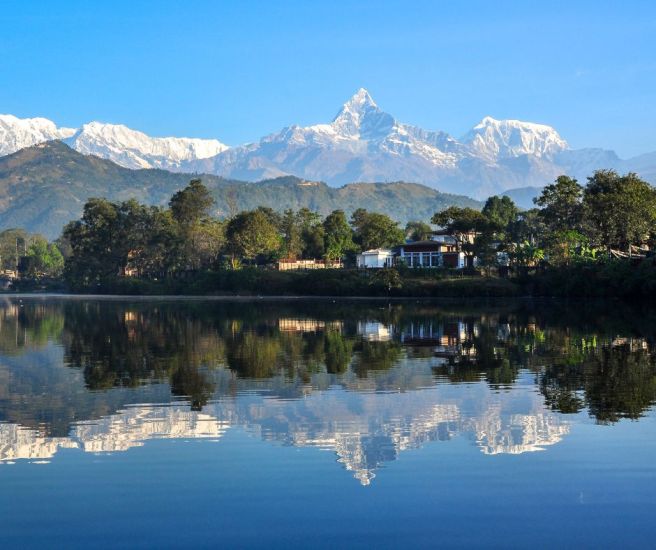Annapurna Circuit & Tilicho Lake Trek
17 Days / Nepal
Activity
Difficulty Level
Destinations
Trip Start / End
Max Altitude
Accommodation
Travel Style
Best time to travel
Personalized Travel Advice

Dev Raj Nepal
+977 9851096523
Personalized Travel Advice

Dev Raj Nepal
+977 9851096523
Detailed Itinerary
01
DAY
01
Upon arrival at Tribhuvan International Airport, you will be warmly welcomed and transferred to your hotel in the city. After check-in and some time to relax, enjoy a traditional Nepali welcome dinner at a local restaurant, featuring authentic cuisine and cultural ambiance. Overnight in Kathmandu.
Arrival in Kathmandu
Upon arrival at Tribhuvan International Airport, you will be warmly welcomed and transferred to your hotel in the city. After check-in and some time to relax, enjoy a traditional Nepali welcome dinner at a local restaurant, featuring authentic cuisine and cultural ambiance. Overnight in Kathmandu.
02
DAY
02
Our Annapurna Circuit via Tilicho Lake trek begins with an early breakfast at the hotel before departing by private car along a mostly smooth highway. One section, a 24 km stretch between Muglin and Dumre, remains under construction due to ongoing road widening. Along the way to Besisahar, there will be chances to pause for scenic photos, tea or coffee, and lunch.
At Besisahar, the mode of transport shifts to a local jeep or shared bus for the off-road leg to Dharapani via Jagat. Covering roughly 50 km in about three hours, this rugged drive introduces the first taste of the remote Himalayan landscape. Upon reaching Dharapani, check into the lodge and unwind for the night.
Kathmandu – Beshisahar – Dharapani
Our Annapurna Circuit via Tilicho Lake trek begins with an early breakfast at the hotel before departing by private car along a mostly smooth highway. One section, a 24 km stretch between Muglin and Dumre, remains under construction due to ongoing road widening. Along the way to Besisahar, there will be chances to pause for scenic photos, tea or coffee, and lunch.
At Besisahar, the mode of transport shifts to a local jeep or shared bus for the off-road leg to Dharapani via Jagat. Covering roughly 50 km in about three hours, this rugged drive introduces the first taste of the remote Himalayan landscape. Upon reaching Dharapani, check into the lodge and unwind for the night.
03
DAY
03
Today, we begin our trek, following a mix of forested trails and rough jeep tracks that gradually ascend toward Chame, a charming Gurung village in the Mustang region. The trail winds through traditional settlements like Odargaun and Bagarchhap, offering glimpses of stone-built houses, terraced hillsides, and peaceful riverside paths. As we gain elevation, the scenery begins to shift—lush pine forests, cascading waterfalls, and distant views of snow-capped peaks begin to emerge. Chame, set against a backdrop of dramatic cliffs and mountains, offers a serene and picturesque setting for our overnight stay.
Trek to Chame
Today, we begin our trek, following a mix of forested trails and rough jeep tracks that gradually ascend toward Chame, a charming Gurung village in the Mustang region. The trail winds through traditional settlements like Odargaun and Bagarchhap, offering glimpses of stone-built houses, terraced hillsides, and peaceful riverside paths. As we gain elevation, the scenery begins to shift—lush pine forests, cascading waterfalls, and distant views of snow-capped peaks begin to emerge. Chame, set against a backdrop of dramatic cliffs and mountains, offers a serene and picturesque setting for our overnight stay.
04
DAY
04
An early start rewards us with golden light spilling across Lamjung Himal (6,893m), a majestic sight that sets a striking tone for the day. The trail climbs steadily through fragrant pine forests and scattered hamlets, gradually opening up to the dramatic contours of the Marsyangdi Valley.
Approaching Brathang Village, a powerful waterfall tumbles down sheer cliffs, a captivating pause before we continue on. Not far ahead, a long Mani wall stands beside a suspension bridge, marking our deeper entry into the Buddhist cultural heart of the region.
By late afternoon, we arrive in Pisang, a quiet village at the base of Pisang Peak, offering panoramic views of Annapurna II (7,937m). The night is spent in a cozy tea house, surrounded by peaks and prayer flags swaying in the mountain breeze.
Trek to Pisang
An early start rewards us with golden light spilling across Lamjung Himal (6,893m), a majestic sight that sets a striking tone for the day. The trail climbs steadily through fragrant pine forests and scattered hamlets, gradually opening up to the dramatic contours of the Marsyangdi Valley.
Approaching Brathang Village, a powerful waterfall tumbles down sheer cliffs, a captivating pause before we continue on. Not far ahead, a long Mani wall stands beside a suspension bridge, marking our deeper entry into the Buddhist cultural heart of the region.
By late afternoon, we arrive in Pisang, a quiet village at the base of Pisang Peak, offering panoramic views of Annapurna II (7,937m). The night is spent in a cozy tea house, surrounded by peaks and prayer flags swaying in the mountain breeze.
05
DAY
05
The trail leads from Pisang to the high-altitude village of Ghyaru, offering striking views of Annapurna II and III along the way. This stretch of the trek is especially scenic, with sweeping mountain panoramas and a quiet path lined with alpine vegetation and prayer flags.
From Ghyaru, the journey continues toward Manang, taking roughly five hours in total. The route passes through open grasslands and offers uninterrupted views of the Annapurna range, making it one of the most memorable days of the trek.
Overnight at a local tea house in Manang Village.
Trek to Manang
The trail leads from Pisang to the high-altitude village of Ghyaru, offering striking views of Annapurna II and III along the way. This stretch of the trek is especially scenic, with sweeping mountain panoramas and a quiet path lined with alpine vegetation and prayer flags.
From Ghyaru, the journey continues toward Manang, taking roughly five hours in total. The route passes through open grasslands and offers uninterrupted views of the Annapurna range, making it one of the most memorable days of the trek.
Overnight at a local tea house in Manang Village.
06
DAY
06
This is a well-deserved rest day to help your body acclimate to the high altitude, a crucial step to prevent altitude sickness and ensure you stay healthy for the remainder of the trek. You can relax and enjoy the peaceful mountain village atmosphere or, if you wish, choose from optional hikes nearby, offering stunning views and gentle exploration to aid acclimatization at your own pace.
Rest & Acclimatization at Manang
This is a well-deserved rest day to help your body acclimate to the high altitude, a crucial step to prevent altitude sickness and ensure you stay healthy for the remainder of the trek. You can relax and enjoy the peaceful mountain village atmosphere or, if you wish, choose from optional hikes nearby, offering stunning views and gentle exploration to aid acclimatization at your own pace.
07
DAY
07
Leaving the western edge of the village, the trail gently descends toward the river, offering sweeping views and the soothing sound of flowing water. After crossing the clear, glacier-fed stream, the path veers south into a forest of pine and rhododendron, where birdsong and rustling leaves create a peaceful rhythm.
The forest opens up near Khangsar Village, a quiet settlement with traditional stone homes and tiered fields that reflect the simplicity of mountain life. From here, the route climbs steadily for about an hour toward Siri Kharka, a wide, open pasture framed by snow-covered peaks.
Along the way, a modest monastery invites a pause. This is a place of quiet reflection where monks may be seen going about their daily routines. The journey moves through a mix of landscapes, from riverside trails to alpine meadows, keeping the day fresh and immersive.
Overnight stay at a tea house in Siri Kharka.
Trek to Siri Karka
Leaving the western edge of the village, the trail gently descends toward the river, offering sweeping views and the soothing sound of flowing water. After crossing the clear, glacier-fed stream, the path veers south into a forest of pine and rhododendron, where birdsong and rustling leaves create a peaceful rhythm.
The forest opens up near Khangsar Village, a quiet settlement with traditional stone homes and tiered fields that reflect the simplicity of mountain life. From here, the route climbs steadily for about an hour toward Siri Kharka, a wide, open pasture framed by snow-covered peaks.
Along the way, a modest monastery invites a pause. This is a place of quiet reflection where monks may be seen going about their daily routines. The journey moves through a mix of landscapes, from riverside trails to alpine meadows, keeping the day fresh and immersive.
Overnight stay at a tea house in Siri Kharka.
08
DAY
08
The trail from Siri Kharka to Tilicho Base Camp winds through stark, dramatic landscapes, where jagged cliffs and deep glacial valleys dominate the scenery. Though the route isn’t particularly steep, it requires careful footing, especially in narrow, landslide-prone sections that test both focus and endurance at high altitude.
As the terrain grows more rugged and barren, the sense of remoteness deepens. Towering rock walls rise on either side, and the silence of the high mountains settles in. Approaching base camp, the vastness of the surroundings creates an unforgettable feeling of isolation and awe.
Spend the night at Tilicho Base Camp, beneath looming cliffs and under the quiet promise of tomorrow’s ascent to the lake.
Trek to Tilicho Base Camp
The trail from Siri Kharka to Tilicho Base Camp winds through stark, dramatic landscapes, where jagged cliffs and deep glacial valleys dominate the scenery. Though the route isn’t particularly steep, it requires careful footing, especially in narrow, landslide-prone sections that test both focus and endurance at high altitude.
As the terrain grows more rugged and barren, the sense of remoteness deepens. Towering rock walls rise on either side, and the silence of the high mountains settles in. Approaching base camp, the vastness of the surroundings creates an unforgettable feeling of isolation and awe.
Spend the night at Tilicho Base Camp, beneath looming cliffs and under the quiet promise of tomorrow’s ascent to the lake.
09
DAY
09
Today’s trek is a challenging ascent from Tilicho Base Camp to the stunning Tilicho Lake (4,919m), one of the highest lakes in the world. The trail climbs steadily across barren, rocky terrain, with thin air and high altitude adding to the difficulty. Along the way, we may spot yaks and Himalayan deer grazing in the sparse alpine pastures. As we reach the lake, we’re rewarded with a breathtaking view, Tilicho Lake’s turquoise waters shimmering beneath the imposing north face of Tilicho Peak (7,134m).
After soaking in the incredible scenery and taking a well-earned break, we retrace our steps and return to Siri Kharka for the night.
Trek to Tilicho Lake – Return to Siri Kharka
Today’s trek is a challenging ascent from Tilicho Base Camp to the stunning Tilicho Lake (4,919m), one of the highest lakes in the world. The trail climbs steadily across barren, rocky terrain, with thin air and high altitude adding to the difficulty. Along the way, we may spot yaks and Himalayan deer grazing in the sparse alpine pastures. As we reach the lake, we’re rewarded with a breathtaking view, Tilicho Lake’s turquoise waters shimmering beneath the imposing north face of Tilicho Peak (7,134m).
After soaking in the incredible scenery and taking a well-earned break, we retrace our steps and return to Siri Kharka for the night.
10
DAY
10
The path begins with a descent toward Khangsar Village, retracing part of the route through wide alpine landscapes. A detour leads up to Tare Gumba, a thousand-year-old monastery perched high above the valley, a revered spiritual site where locals still come to offer prayers and seek blessings.
Returning to Khangsar, the path skirts along a dramatic rock face before entering the Thorong Khola Valley. A seasonal bridge spans the icy river below, marking the transition into a more remote section of the trail. From here, the route climbs steadily through open pastures and wind-blown slopes, eventually reaching Yak Kharka.
Tonight’s stay is in a quiet teahouse nestled among the high Himalayan ridges, a place of rest before the journey continues higher.
Trek to Yak Kharka
The path begins with a descent toward Khangsar Village, retracing part of the route through wide alpine landscapes. A detour leads up to Tare Gumba, a thousand-year-old monastery perched high above the valley, a revered spiritual site where locals still come to offer prayers and seek blessings.
Returning to Khangsar, the path skirts along a dramatic rock face before entering the Thorong Khola Valley. A seasonal bridge spans the icy river below, marking the transition into a more remote section of the trail. From here, the route climbs steadily through open pastures and wind-blown slopes, eventually reaching Yak Kharka.
Tonight’s stay is in a quiet teahouse nestled among the high Himalayan ridges, a place of rest before the journey continues higher.
11
DAY
11
We set out on a steady ascent toward Thorong Phedi, the final outpost before crossing the high pass, the famed Thorong La (5,416m). The day begins with a suspension bridge crossing, followed by a gradual climb to the small settlement of Ledar. From here, the landscape shifts as trees give way to rock and scree, and the trail winds along narrow ridgelines above the valley floor.
As we gain altitude, the air thins and the terrain becomes starker, but the reward is immense: sweeping views of the Annapurna range unfolding with each step. By afternoon, we reach Thorong Phedi, a rugged cluster of lodges nestled beneath towering cliffs.
Tonight, we rest here, preparing for the big day ahead.
Trek to Thorong Phedi
We set out on a steady ascent toward Thorong Phedi, the final outpost before crossing the high pass, the famed Thorong La (5,416m). The day begins with a suspension bridge crossing, followed by a gradual climb to the small settlement of Ledar. From here, the landscape shifts as trees give way to rock and scree, and the trail winds along narrow ridgelines above the valley floor.
As we gain altitude, the air thins and the terrain becomes starker, but the reward is immense: sweeping views of the Annapurna range unfolding with each step. By afternoon, we reach Thorong Phedi, a rugged cluster of lodges nestled beneath towering cliffs.
Tonight, we rest here, preparing for the big day ahead.
12
DAY
12
This is one of the most demanding and unforgettable days of the entire trek as we embark on a long, high-altitude journey across the formidable Thorong La Pass (5,416m), one of the highest trekking passes in the world. We begin before dawn, ascending steadily through barren, windswept terrain, where the cold bites and the air grows thinner with every step.
The climb is tough, but each stride brings a rising sense of determination. Eventually, we reach the summit, where a sea of prayer flags flutters wildly in the wind. Standing at the top of the pass, surrounded by snow-draped peaks, is a moment of triumph. We discover that exhaustion meets elation perfectly.
After soaking in the views and catching our breath, we begin the long descent toward Muktinath. The landscape shifts dramatically as we enter Mustang, a stark and striking region of eroded cliffs and windswept valleys. By late afternoon, we arrive at the sacred town of Muktinath, a revered pilgrimage site for both Hindus and Buddhists.
Carrying the weight and wonder of the day behind us, stay at a cozy tea house in Muktinath.
Cross Thorong La & Trek to Muktinath
This is one of the most demanding and unforgettable days of the entire trek as we embark on a long, high-altitude journey across the formidable Thorong La Pass (5,416m), one of the highest trekking passes in the world. We begin before dawn, ascending steadily through barren, windswept terrain, where the cold bites and the air grows thinner with every step.
The climb is tough, but each stride brings a rising sense of determination. Eventually, we reach the summit, where a sea of prayer flags flutters wildly in the wind. Standing at the top of the pass, surrounded by snow-draped peaks, is a moment of triumph. We discover that exhaustion meets elation perfectly.
After soaking in the views and catching our breath, we begin the long descent toward Muktinath. The landscape shifts dramatically as we enter Mustang, a stark and striking region of eroded cliffs and windswept valleys. By late afternoon, we arrive at the sacred town of Muktinath, a revered pilgrimage site for both Hindus and Buddhists.
Carrying the weight and wonder of the day behind us, stay at a cozy tea house in Muktinath.
13
DAY
13
The morning starts at a relaxed pace, with an optional visit to the sacred Muktinath Temple. Nestled beneath towering peaks, the temple complex houses eternal flames and 108 water spouts, believed to purify the soul and offer salvation.
After breakfast at the lodge, board a local shared jeep for a journey down the Kali Gandaki Valley. The route passes through the windswept town of Jomsom before descending into the lower Mustang region.
By afternoon, arrive in Marpha, a charming Thakali village known for its whitewashed houses, narrow stone-paved lanes, and famous apple orchards. Settle into a teahouse and soak in the peaceful pulse of village life.
Drive to Marpha
The morning starts at a relaxed pace, with an optional visit to the sacred Muktinath Temple. Nestled beneath towering peaks, the temple complex houses eternal flames and 108 water spouts, believed to purify the soul and offer salvation.
After breakfast at the lodge, board a local shared jeep for a journey down the Kali Gandaki Valley. The route passes through the windswept town of Jomsom before descending into the lower Mustang region.
By afternoon, arrive in Marpha, a charming Thakali village known for its whitewashed houses, narrow stone-paved lanes, and famous apple orchards. Settle into a teahouse and soak in the peaceful pulse of village life.
14
DAY
14
After breakfast, we will take a scenic drive to Pokhara, descending further along the Kali Gandaki Valley. On the way, we stop at Tatopani, a village famous for its natural hot springs, where you can relax and soak in the warm, healing waters, a welcome treat after days of trekking. After some time to unwind, we continue our journey through lush hillsides and riverside roads, arriving in Pokhara by late afternoon.
Overnight in Pokhara, a lakeside city known for its serene atmosphere and beautiful mountain views.
Drive to Pokhara
After breakfast, we will take a scenic drive to Pokhara, descending further along the Kali Gandaki Valley. On the way, we stop at Tatopani, a village famous for its natural hot springs, where you can relax and soak in the warm, healing waters, a welcome treat after days of trekking. After some time to unwind, we continue our journey through lush hillsides and riverside roads, arriving in Pokhara by late afternoon.
Overnight in Pokhara, a lakeside city known for its serene atmosphere and beautiful mountain views.
15
DAY
15
The day is devoted to exploring the scenic city of Pokhara, set beneath the towering peaks of the Annapurna range. Start by visiting the World Peace Pagoda, perched on a hilltop, offering sweeping views over Pokhara city, Phewa Lake, and the dramatic silhouette of Machapuchare (Fishtail Peak). This serene spot is perfect for reflection and photography.
Next, explore the International Mountain Museum, where exhibits showcase the history of mountaineering in Nepal, profiles of famous climbers, and detailed displays about the region’s diverse mountain cultures and ecosystems. Continue to the Gorkha Museum, which honors the bravery and rich heritage of Nepal’s Gorkha soldiers, known worldwide for their valor.
Stroll through the vibrant Old Bazaar, where traditional Newari architecture lines the bustling streets filled with local vendors, craftspeople, and eateries. The atmosphere here offers a genuine glimpse into everyday Nepali life.
After lunch, get on a tranquil boat ride across Phewa Lake. Glide gently over its calm waters while the reflection of the sacred Machapuchare Peak shimmers beneath you. The lake is dotted with small islands and surrounded by lush hills, making this a perfect moment of peace.
As the sun begins to set, unwind at one of Pokhara’s many lakeside cafes. Enjoy local delicacies or a warm cup of tea while soaking in the tranquil ambiance by the water’s edge.
Stay at a comfortable hotel in Pokhara, resting up for the adventures ahead.
Pokhara Sightseeing
The day is devoted to exploring the scenic city of Pokhara, set beneath the towering peaks of the Annapurna range. Start by visiting the World Peace Pagoda, perched on a hilltop, offering sweeping views over Pokhara city, Phewa Lake, and the dramatic silhouette of Machapuchare (Fishtail Peak). This serene spot is perfect for reflection and photography.
Next, explore the International Mountain Museum, where exhibits showcase the history of mountaineering in Nepal, profiles of famous climbers, and detailed displays about the region’s diverse mountain cultures and ecosystems. Continue to the Gorkha Museum, which honors the bravery and rich heritage of Nepal’s Gorkha soldiers, known worldwide for their valor.
Stroll through the vibrant Old Bazaar, where traditional Newari architecture lines the bustling streets filled with local vendors, craftspeople, and eateries. The atmosphere here offers a genuine glimpse into everyday Nepali life.
After lunch, get on a tranquil boat ride across Phewa Lake. Glide gently over its calm waters while the reflection of the sacred Machapuchare Peak shimmers beneath you. The lake is dotted with small islands and surrounded by lush hills, making this a perfect moment of peace.
As the sun begins to set, unwind at one of Pokhara’s many lakeside cafes. Enjoy local delicacies or a warm cup of tea while soaking in the tranquil ambiance by the water’s edge.
Stay at a comfortable hotel in Pokhara, resting up for the adventures ahead.
16
DAY
16
A short scenic flight returns you to Kathmandu, offering one last chance to admire the majestic Himalayan peaks from the air. Upon landing, you will be transferred to your hotel, where the remainder of the day is yours to relax or explore the city at your leisure. Spend the night at a comfortable hotel in the heart of Kathmandu city.
Flight to Kathmandu
A short scenic flight returns you to Kathmandu, offering one last chance to admire the majestic Himalayan peaks from the air. Upon landing, you will be transferred to your hotel, where the remainder of the day is yours to relax or explore the city at your leisure. Spend the night at a comfortable hotel in the heart of Kathmandu city.
17
DAY
17
You will be transferred to Tribhuvan International Airport for your onward journey, after breakfast. May you carry with you unforgettable memories of the Himalayas and the lasting bonds formed during your adventure.
Departure
You will be transferred to Tribhuvan International Airport for your onward journey, after breakfast. May you carry with you unforgettable memories of the Himalayas and the lasting bonds formed during your adventure.
Tour Cost
At High Asia Tours, we know that understanding tour costs is essential for planning your trip. Due to variables such as accommodation choices, meal plans, transportation options, group size, and seasonal demand, providing an exact price upfront is challenging.
To assist you, we offer a starting price to give a general idea of the cost:
The starting cost for this tour is
Includes / Excludes
Inclusions
-
Trek Permit and Trekking Registration Fees
-
All accommodations on a Twin-sharing basis
-
Meals mentioned in the itinerary
-
Experienced trekking guide
-
1 Porter for 3 Pax
-
Trekking crew insurance
-
Pokhara – Kathmandu Domestic flight
-
All ground transfers by Private vehicle except Muktinath to Marpha
-
Shared Jeep from Muktinath to Marpha
Exclusions
-
Drinks, tip and extra expenses of personal nature
-
Extra expenses due to nature and unforeseen events
-
Travel Insurance
-
Nepal Visa Fee
-
Meals not mentioned in the itinerary
Trip Info
Annapurna Circuit with Tilicho Lake Trek
This trek follows the classic Annapurna Circuit route but with a scenic and adventurous detour to Tilicho Lake, making it a more enriching version of the original. While the classic Annapurna Circuit Trek is extremely popular among trekkers (and rightly so), this trek offers a rich addition to the already popular scenic and adventurous itinerary.
Here’s what sets it apart:
Tilicho Lake Extension
Unlike the standard Annapurna Circuit, this itinerary includes a side trip to Tilicho Lake, one of the highest lakes in the world at 4,919 meters. It’s a pristine, glacial lake surrounded by dramatic, snow-covered peaks. Reaching it is physically demanding, but the reward is extraordinary.
Added Challenge, Deeper Reward
The detour to Tilicho Base Camp involves steeper trails, rugged terrain, and exposure to high altitude earlier in the trek. This makes it a bit more strenuous than the regular circuit, but also more rewarding for those looking for a deeper sense of adventure.
Longer Acclimatization Window
By heading to Tilicho Lake before Thorong La, trekkers gain additional time to acclimatize, which can make the Thorong La crossing (5,416 m) safer and more manageable—even though this itinerary still includes an overnight at Thorong Phedi before the pass day.
Richer Landscapes
The route from Khangsar to Tilicho Base Camp passes through dramatic rock walls, alpine meadows, and glacial valleys, adding more variety and grandeur to the already diverse terrain of the Annapurna region.
Fewer Crowds, More Solitude
The trail to Tilicho is less crowded than the main circuit, offering quieter paths and a stronger connection with the natural environment.
Spring (March to May)
Spring brings the Annapurna region to life with blossoming rhododendrons and crisp, fresh air. Days are pleasantly warm, with temperatures ranging between 10°C and 20°C, ideal for long walks through forests and high trails. The skies are generally clear, revealing uninterrupted views of Annapurna, Dhaulagiri, and other Himalayan peaks.
Autumn (Mid-September to November)
Autumn is the most popular time to trek. The monsoon rains will have cleared the air, leaving behind crystal-clear skies and dry, stable trails. Daytime temperatures typically range from 8°C to 18°C, offering a cool, comfortable climate for high-altitude hiking. The region is also alive with local festivals like Dashain and Tihar, which can enrich your cultural experience along the way.
Your journey combines comfort and authentic mountain experiences with a mix of accommodations suited to each stage of the trip.
Kathmandu and Pokhara
In both cities, you will stay in good-quality hotels offering modern amenities such as comfortable beds, hot showers, Wi-Fi, and relaxing common areas, perfect for rest and recovery before and after your trek.
Dharapani and Marpha
During the trek, your overnight stays at lodges in Dharapani and Marpha provide cozy rooms with basic facilities. These lodges offer a warm atmosphere, hearty meals, and a chance to experience local hospitality in welcoming mountain villages.
Tea Houses Along the Trail
Throughout the trekking days, you will stay in traditional tea houses, which are simple mountain guesthouses run by local families. Tea houses typically feature shared or private rooms with basic bedding and shared bathroom facilities. They provide an authentic cultural experience, allowing you to connect with the local way of life while enjoying nourishing home-cooked meals and stunning mountain views.
During your Annapurna Circuit with Tilicho Lake trek, you’ll enjoy a variety of delicious meals that reflect both local flavors and familiar favorites.
Kathmandu and Pokhara
In the cities, a wide selection of restaurants offers everything from traditional Nepali dishes to international cuisine. You can easily find Western-style meals such as pasta, pizza, sandwiches, and burgers alongside local favorites like dal bhat, momo (dumplings), and thukpa (noodle soup).
Tea Houses and Lodges on the Trail
Along the trekking route, the tea houses and lodges serve hearty, nourishing food designed to fuel your days on the trail. Traditional meals such as dal bhat tarkari (lentils, rice, and vegetables), potatoes, noodles, soups, and vegetable curries are commonly available. Most tea houses also offer Western-style options like pasta, pancakes, omelets, and fried rice to cater to diverse tastes. Fresh fruit and snacks may be limited but available in larger villages.
Beverages
Hot drinks like tea, coffee, and hot chocolate are widely available and perfect for warming up after a day of trekking. Bottled water and soft drinks can be purchased at most stops, but it’s recommended to carry a refillable water bottle and use water purification methods.
To ensure a seamless and comfortable journey, all airport pickups and drop-offs in Kathmandu and Pokhara are arranged with private cars. These vehicles provide a personalized and stress-free start and finish to your adventure, allowing you to relax as you arrive or depart from Nepal.
For key transfers during the trek, such as the drive from Kathmandu to Dharapani and from Marpha to Pokhara, you will travel in private SUVs. These vehicles are spacious and well-maintained, equipped to handle the varied terrain and winding mountain roads. Traveling by private SUV gives you the flexibility to stop for photos, refreshments, and sightseeing along the way, making the journey part of your overall experience.
The transfer between Muktinath and Marpha is covered by a public shared jeep, offering a more local and social travel experience. Sharing the jeep with other travelers and locals provides a glimpse into daily life in the region and allows you to enjoy spectacular views of the Kali Gandaki valley as you descend through this stunning landscape.
• Important Items: Airlines Tickets, Valid Passport (6 months valid at least), 2 passport size photo graphs, Insurance Paper, some cash dollars or euros for purchasing Nepalese visa at Kathmandu airport, for paying at restaurants and hotels for gratuities, snacks and purchase your won drinks in trek. Credit card (visa/master card) for withdrawing cash from cash machines if needs.
• For Head: Sun Hat, Bandana or head scarf, Headlamp with extra batteries, Sun Glasses with UV protection.
• For Upper body: Shirts, (1 half sleeve and 2 long sleeves) Lightweight thermal tops, Fleece jacket or woolen Sweater, Wind Cheater, Jacket, Down Jacket.
• For Lower Body: 1 Pair of lightweight thermal bottoms, 1 pair of fleece or woolen trousers, 1 pair of waterproof shell pants and 1 pair of hiking trousers.
• For Feet: 2 Pair of thin inner socks, 2 pairs of poly or woolen socks, 01 pair of hiking boots (Sturdy soles, water resistant, ankle support), 1 pair of running shoes and or sandals.
• Other Useful Items: 1 Sleeping bag ( good to -20 Degrees C ) Rucksack and travel bags, 1 Large duffel bag, A small daypack/backpack or carrying your valuables, small padlocks for duffel bags, 2 large waterproof rucksack covers (Optional), 2 water bottles ( 1 liter each) disposal rubbish sacks, Toiletries, 1 Medium-sized quick drying towel, Toothbrush/Paste, Multi-Purpose soap, Deodorants, Nail Clippers, face and body Moisturizer, Tissue/Toilet Roll, hiking poles, snack food ( Chocolate/Biscuits, cookies), Umbrella, Reading books.
• Medical: Your daily taking medicine if any, small personal first aid kid, Aspirin, Plasters (Band-Aids), Sunscreen, Lip balms, Anti Diarrhea pills, Anti-headache Pills, A cough/cold medicine, Anti Altitude Sickness Pills: Diamox or Acetazolamide, Stomach antibiotic, Ciprofloxacin.
Pisang
Pisang is a scenic village situated in Nepal’s Manang District, within the Annapurna Conservation Area. It boasts breathtaking views of the Annapurna and Gangapurna mountain ranges. Known for its rich Tibetan-influenced culture and ancient monasteries, the village is home to the Gurung and Manange communities. Their warm hospitality enhances the village’s appeal. Visitors can experience traditional farming methods and also observe the creation of local handicrafts in the village.
Manang
Manang, at 3,518 meters, is a stunning village perched on the edge of cliffs in the northern region of the Annapurna Range. Its dry, rugged terrain resembles a barren desert, but the culture and lifestyle of the local Manange people are rich and vibrant. Known as the “crown jewel” of the Annapurna Circuit Trek, Manang offers spectacular views of towering snow-capped peaks, including Mt. Dhaulagiri (8,167 m), Mt. Manaslu (8,163 m), and Mt. Annapurna (8,091 m). The distinctive Mt. Machhapuchhre (6,993 m), or “Fishtail Mountain,” also presents a breathtaking sight from here.
Thorong La Pass
Thorong La Pass is a high-altitude mountain pass located at an elevation of 5,416 meters in the Annapurna region of Nepal. The pass connects the villages of Manang to the east with Muktinath and the Kali Gandaki valley to the west. Crossing Thorong La is considered both a physical and mental challenge due to its altitude and unpredictable weather conditions, but it rewards with breathtaking panoramic views of the Annapurna and Dhaulagiri mountain ranges. Crossing this pass offers a unique blend of natural beauty, cultural encounters, and adventure.
Muktinath
Situated at an altitude of 3,710 meters (12,172 feet) at the base of the Thorong La Pass in the Mustang district, Muktinath is a revered pilgrimage site for both Hindus and Buddhists. For Hindus, the site is known as Mukti Kshetra, meaning the “place of liberation,” and it holds immense significance as one of the most ancient temples dedicated to Lord Vishnu within the Vaishnava tradition of Nepal. It is also one of the eight sacred Svayam Vyakta Ksetras, or self-manifested shrines of Vishnu. For Buddhists, the temple represents a place where Guru Rinpoche (Padmasambhava) meditated, further enhancing its spiritual importance. Muktinath’s blend of natural beauty and profound religious significance makes it a destination of spiritual pilgrimage for people from all over the world.
Gurung, Manange, Thakali People
The Gurung, Manange, and Thakali communities are indigenous groups from the mountainous regions of Nepal, each with rich cultural traditions and distinct identities. The Gurungs, primarily residing in the Annapurna region, are known for their close-knit communities, traditional dances like Ghantu and Rodhi, and their long-standing involvement in the British and Indian Gurkha regiments. They follow Buddhism mixed with Shamanism. The Manange people, from the remote region of Manang, have historically been traders, traversing high-altitude routes between Nepal and Tibet. Their Tibetan-influenced culture, with a focus on Buddhism, is deeply rooted in the region’s monasteries and festivals. The Thakalis, native to the Thak Khola Valley in the Mustang district, are renowned for their business acumen, operating successful trade routes historically and running lodges along the Annapurna trekking circuit today.
Tilicho Lake
Tilicho Lake, located in the Manang district of Nepal, is one of the highest lakes in the world, sitting at an altitude of 4,919 meters (16,138 feet) above sea level. Situated at the foot of the Annapurna range, the lake is surrounded by breathtaking snow-capped peaks, including Tilicho Peak, and its crystal-clear blue waters reflect the rugged beauty of the Himalayas. Tilicho holds religious significance for Hindus, as some believe it to be the ancient Kak Bhusundi Lake mentioned in the Ramayana. The journey to Tilicho Lake is both physically demanding and rewarding, offering trekkers not only stunning alpine scenery but also a chance to experience the remote wilderness of Nepal.
Marpha
Marpha is a picturesque village located in the Mustang district of Nepal, along the Kali Gandaki River, at an altitude of around 2,670 meters (8,760 feet). Known for its well-preserved traditional architecture, whitewashed houses, and narrow stone-paved streets, Marpha exudes an old-world charm that reflects its rich cultural heritage. The village is primarily inhabited by the Thakali community. Marpha is famous for its production of apples and apple-based products, including the popular Marpha apple brandy and dried apple snacks. Buddhist monasteries, fluttering prayer flags, and stupas are scattered throughout, highlighting the deep spiritual roots of the local community.
Trekking in the Annapurna region means gradually ascending to high altitudes, with the highest point being Thorong La Pass at 5,416 meters. At these elevations, the air contains less oxygen, which can lead to altitude sickness if the body doesn’t adjust properly. Symptoms may include headaches, nausea, dizziness, and fatigue. To minimize risks, it’s essential to allow your body time to acclimatize by ascending slowly and incorporating rest days into the itinerary.
Proper acclimatization is key to a safe and enjoyable trek. This trek includes a strategic rest day and gradual altitude gains to help your body adapt to thinner air. Staying well-hydrated, eating nutritious meals, avoiding alcohol, and listening carefully to your body are all important. If symptoms of altitude sickness occur, it’s crucial to communicate with your guide immediately, who can adjust the pace or altitude as needed. Taking these precautions ensures you can fully experience the breathtaking beauty and challenge of the Himalayas.
Risks
Altitude Sickness
High altitude poses a significant risk of altitude sickness, which can range from mild symptoms like headaches, nausea, and dizziness to more severe conditions. To minimize this risk, it is essential to ascend gradually, allow time for proper acclimatization, stay well-hydrated, and be vigilant in recognizing early symptoms.
Physical Strain
The trek requires sustained physical effort, which may lead to fatigue, muscle strains, or injuries. Preparing physically before the trek, pacing yourself during the journey, and paying close attention to your body’s signals are key strategies to prevent exhaustion and injury.
Trail Safety
Certain sections of the route feature narrow trails, steep climbs, and areas prone to rockfalls or landslides, which can present safety hazards. It’s important to stay on marked paths, heed your guide’s instructions, and remain aware of your surroundings at all times.
Rewards
Stunning Scenery
The trek rewards you with spectacular views of the Annapurna and Dhaulagiri mountain ranges, lush valleys, arid high-altitude deserts, glaciers, and the breathtaking Tilicho Lake and Peak.
Cultural Experience
Along the way, you’ll engage with vibrant local cultures and traditions, encountering ethnic communities such as the Gurung, Thakali, and Manange people, enriching your journey with authentic Himalayan heritage.
Sense of Accomplishment
Completing the trek, including crossing the formidable Thorong La Pass and reaching Tilicho Base Camp, delivers a deep sense of achievement. The physical and mental challenges promote personal growth, resilience, and confidence.
Unique Adventure
This trek encompasses an extraordinary variety of landscapes and trekking experiences, from subtropical forests to stark highland deserts, making it a truly distinctive Himalayan adventure.
Connection with Nature and Spirituality
Immersed in the majestic natural beauty of the Himalayas, many trekkers find the journey to be deeply spiritual and reflective, offering moments of tranquility, introspection, and a profound connection with nature.
Safety is our top priority throughout your trek. Our experienced guides are trained in first aid and high-altitude emergency protocols, ensuring that any health concerns or injuries are addressed promptly. In case of serious altitude sickness or injury, we have clear evacuation plans in place, including access to local rescue services and the ability to arrange helicopter evacuation if necessary. Medical facilities are available in key villages such as Manang and Jomsom, and your guide will monitor everyone’s health closely to minimize risks. It’s important that trekkers communicate openly about how they feel, so we can act quickly if symptoms of altitude sickness or exhaustion arise.
While this trek is suitable for people with moderate fitness levels, some basic preparation will make your experience more comfortable and enjoyable. Regular activities like walking, light jogging, or cycling in the weeks leading up to your trek can help build stamina. It’s also helpful to practice hiking on varied terrain if possible, ideally with a backpack to get used to carrying some weight. During the trek, it’s important to pace yourself, stay hydrated, eat well, and rest as needed. Following your guide’s advice on acclimatization and listening to your body will help you avoid common issues and fully appreciate the stunning Himalayan landscapes.
Diverse Terrain and Landscapes
The trek starts with lush, terraced farmlands, rivers, and forests in lower elevations, offering picturesque views of traditional Nepali villages. As you gain altitude, the landscape becomes more barren and rugged, resembling a high-altitude desert with rocky paths and towering peaks. At Tilicho Base Camp, you’ll approach Tilicho Lake, one of the highest lakes in the world, surrounded by towering snow-capped peaks. Expect a thrilling and strenuous ascent to cross Thorong La Pass, one of the highest trekking passes at 5,416 meters.
Spectacular Mountain Views
You’ll witness some of the most iconic peaks in the Annapurna region, including: Annapurna Range: Annapurna II, III, and IV, Dhaulagiri, Tilicho Peak Thorung Peak, Mt. Gundang, and others
Cultural Experience
You’ll trek through various villages where you can experience the lifestyle, traditions, and hospitality of ethnic groups such as Gurung, Thakali, and Manangi people. Along the trek, you’ll encounter Buddhist monasteries, prayer flags, and Mani walls. Muktinath is an important pilgrimage site for both Hindus and Buddhists. Staying in teahouses provides a chance to connect with locals and experience their warm hospitality. Meals are simple but hearty, often featuring dal bhat (lentil soup with rice) and other Nepali staples.
Varying Weather Conditions
The trek starts in warm, subtropical weather, with potential rain during the monsoon season. As you ascend, temperatures drop significantly, especially at night. You’ll experience freezing temperatures and potential snowfall at Tilicho Base Camp and Thorung La Pass. Be prepared for sudden weather changes, particularly in higher altitudes where strong wind may occur.
Physical Demands
Expect long days of trekking, with some days involving 6-8 hours of walking, including steep ascents and descents. You’ll be trekking above 3,000 meters for several days, which can cause fatigue and the risk of altitude sickness. Acclimatization days are crucial. You’ll hike on rocky, uneven paths, narrow trails along cliff edges, and sometimes slippery or slide-prone areas.
Acclimatization and Altitude Sickness
Rest days at places like Manang are built into the itinerary to help your body adjust to the altitude. These are important to avoid altitude sickness. Expect to feel shortness of breath, fatigue, or mild headaches. However, severe altitude sickness can be dangerous, so you’ll need to monitor your health closely.
Simple but Sufficient Accommodation
During the trek, accommodation is basic but comfortable. Rooms usually have beds with blankets, and bathrooms are shared. In higher altitudes, facilities become more basic. Expect simple meals with more carbohydrates. Choices include dal bhat, noodles, soups, and sometimes yak cheese and eggs. In higher regions, food variety may be limited.
Crossing Thorung La Pass
Crossing Thorung La requires an early start, typically very early in the morning, to avoid harsh winds and weather conditions later in the day. The pass is steep and exhausting, but the views are unmatched, making it a rewarding highlight of the trek.
Connection with Fellow Trekkers
The Annapurna Circuit is a well-known trekking route, so you’ll meet fellow trekkers from around the world. This creates a vibrant, multicultural atmosphere in teahouses and along the trail. Many trekkers form strong bonds as they share the challenges and joys of the trek.
Tilicho Base Camp Add-on
The detour to Tilicho Base Camp is more remote and adds a few days to the trek. It’s more physically demanding due to high altitude and narrow, rocky paths. However, Tilicho is stunningly gorgeous. It is surrounded by towering peaks, offering an unforgettable experience.
Spiritual and Reflective Journey
You will come across the Muktinath Temple. This sacred site is revered by both Hindus and Buddhists. Visiting it adds a spiritual element to the trek, giving you a chance to reflect on your journey. You may also see many different stupas and monasteries on the way and most of the hills are adorned with Buddhist prayer flags. The solitude and grandeur of the Himalayas create a perfect environment for reflection, introspection, and a deeper connection with nature.
We firmly believe that travel can be a force for good. As a socially responsible organization, we acknowledge our societal responsibilities and are committed to maintaining a sustainable supply chain while upholding ethical human rights. Furthermore, we advise our travelers to be respectful of local customs and to dress appropriately, particularly when visiting religious sites where modest attire is commonly expected. We also urge our guests to support local artisans and purchase locally-made goods to contribute to the preservation of local economies and cultural heritage.
Leave No Trace: Carry all your trash with you, including plastic wrappers and bottles. Dispose of waste only in designated areas or bring it back to larger towns.
Minimize Waste: Avoid using single-use plastics. Bring a reusable water bottle and use water purification tablets or filters to minimize plastic bottle consumption.
Stick to Designated Trails: Avoid creating new paths, as this leads to soil erosion and damages local vegetation.
Respect Wildlife: Do not disturb or feed wildlife. Keep a safe distance and observe animals in their natural habitats.
Use Water Wisely: Water sources are limited, especially at higher altitudes. Use water sparingly for washing and bathing.
Avoid Polluting Water Sources: Do not wash clothes, dishes, or yourself in rivers or streams. Use a small bucket or basin to gather water and dispose of soapy water far from water sources.
Respect Local Customs and Traditions: Nepal is rich in cultural diversity. Dress modestly, especially when visiting religious sites or interacting with local communities. Ask for permission before taking photos of people or religious sites.
Learn Basic Phrases: Simple greetings in Nepali, like “Namaste,” can go a long way in showing respect and building rapport with locals.
Pack Light: Carry only essentials to reduce the burden on porters and minimize the
Do Not Pick Plants: Many high-altitude plants take years to grow, and picking or damaging them can upset local ecosystems.
Avoid Interacting with Domestic Animals: Many animals like yaks or mules are used for transporting goods. Respect their space and don’t interfere with their work or the livelihoods of their handlers.
Limit Energy Use: Power is scarce in remote areas. Turn off lights and limit the charging of devices to conserve energy.
Tread Lightly Around Temples and Monasteries: Remove shoes before entering temples, refrain from loud conversations, and avoid touching sacred objects without permission.
Choosing a trusted local trekking company in Nepal means prioritizing safety, authenticity, and a genuine connection to the mountains. As a Nepal-based tour and trek operator, we possess firsthand knowledge of the terrain, culture, and communities you’ll encounter throughout your journey. With years of experience, a network of expert guides, and a strong commitment to ethical tourism, we ensure that your trek is not only scenic but also meaningful. Our deep local roots enable us to offer authentic experiences that international agencies often cannot match, making the choice to travel with a local operator like us a clear advantage.
With our private guided treks, you’ll enjoy exclusivity and personalized attention tailored specifically to your needs. Ideal for families, couples, or solo travelers, these one-on-one or small-group adventures offer flexibility and a richer connection to Nepal’s landscapes and cultures. Your dedicated local guide will customize each day’s itinerary, creating opportunities for genuine cultural engagement, whether it’s sharing tea with a mountain family or watching the sunrise over the Himalayas in peaceful solitude. This personalized approach allows you to experience Nepal in the most authentic and memorable way possible.
FAQs
Personalized Travel Advice

Dev Raj Nepal
+977 9851096523
